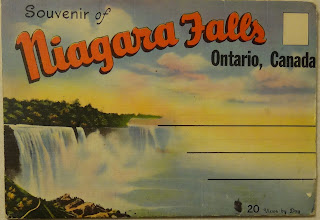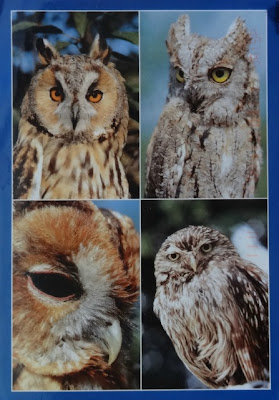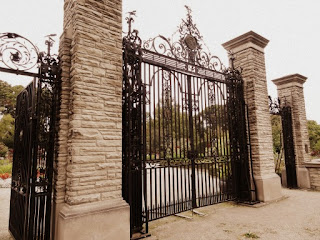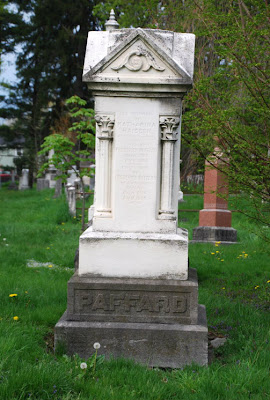Last week I went to my first Postcard Show. I was ridiculously excited about it, though I really had no idea what to expect. And when I came home with my stack of newfound old cards and two packages of protective sleeves, I could hardly wait to get them all sleeved and sorted into the special box I had set out for them.
It seems most of the people I have told about this new hobby think I have gone a little strange. Telling them about my visits to cemeteries makes a few of them step away from me. Thank goodness for my bloggy friends....
So, it seems I took far too much money with me, and as someone mentioned, when I said I was new at this and wasn't looking for anything in particular, I really must decide exactly what it is I want to collect. Some people were very specific. Some stalls had their collection sorted by the artist or the company that made the cards. Mostly I looked for old buildings that were familiar or nostalgic, or street views of the Toronto or Hamilton of old. I stuck to the 50 cent and the 3/$1 boxes, though in my excitement I did come away with a couple of rather expensive pieces which we won't talk about at the moment.
Map cards are a particular favourite, and this one has some interesting graphics. Except for Toronto, Hamilton, Ottawa and Kingston, it appears Ontario is a vast wilderness of outdoorsy activities like hunting and fishing and boating and beaches.

some cards were a little odd. here we have the baby deer, perhaps of the one being shot in the previous card? what is really funny, is that this scene, without the deer, also appears on a few other cards but with different towns named.

Niagara Falls is a favourite. I love the colours and the drawings of the falls. i already have several of them which I will show in another post.

I have taken a liking to the old greeting cards like this generic one.
and the seasonal cards like this one
(even though it has an American bent to it)
the spacing between the letters and the punctuation is a little suspect, don't you think?
But the little table tucked behind the curtain... and the "thankfullest" is priceless.
Happy Thanksgiving!
And if I was in doubt, the deciding factor might be the stamp or the message. This one sent in 1909 to a town with no streets says "Greetings from Sheffield" with no family name! I hoped that Mr Frank Sweet knew who it was from. I was not familiar with anyplace called Sheffield in Ontario but have since looked it up and apparently it is a small town of 304 people between Hamilton and Waterloo, (and not far from Canning) which explains why it was mailed in Galt.
I need a forum for sharing my cards... and this seems like a good choice,
Postcard Friendship Friday








































